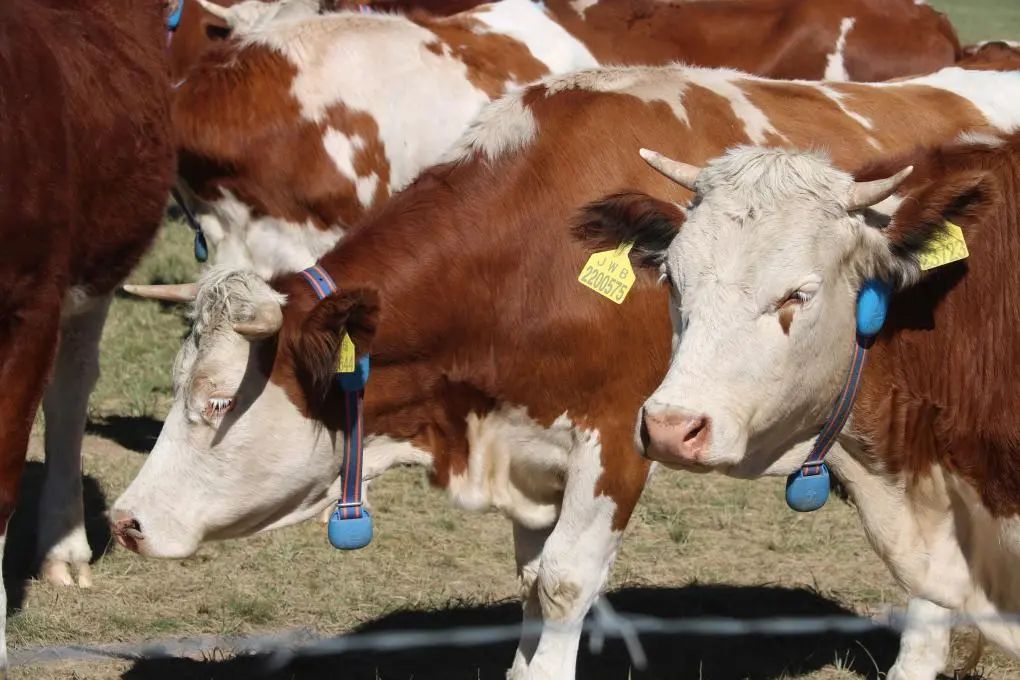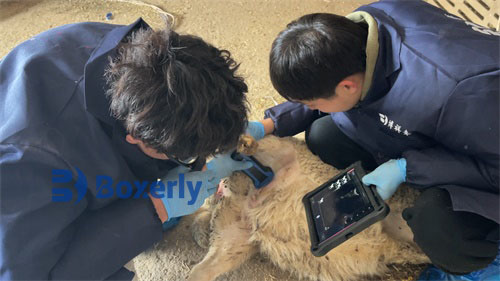The frequency of live egg collection in cows using the OPU live egg collection device must consider two issues. Firstly, the trauma to the cow's reproductive tract and ovaries should be restored to normal during the next egg collection; Secondly, during egg retrieval, there should be viable follicles that have redeveloped on the ovary. After repeated live egg collection in cattle, it was observed that although ovarian bleeding and puncture marks were clearly visible, there was no adhesion between the ovaries and surrounding tissues, and no reproductive diseases such as ovarian cysts occurred. In addition, cows that repeatedly collect eggs can quickly estrus and become pregnant through artificial insemination after egg collection stops, without developing mastitis. Although the use of endoscopy for egg retrieval can cause significant trauma to the vaginal canal, as long as infection does not occur, it usually takes 2-3 days to recover to its original state. However, long-term high-frequency live egg harvesting may cause permanent damage to the ovaries of cattle. Continuous long-term puncture can cause ovarian cysts in some donor cows, which can interfere with their endocrine system, leading to changes in the estrus cycle and a decrease in estrus intensity. We collected live oocytes from three hybrid yellow cattle for about six months. The collection times were 138 and 63104, respectively. After slaughtering, the ovaries were observed, and it was found that the membrane was thickened and embedded with a fat layer. Through tissue sectioning, it was found that the more times the collection was performed, the more severe the thickening of the ovarian membrane, the more fat cells were significantly increased, the scope of the ovarian cortex was reduced, the scope of the medulla was increased, and the number of follicles in the ovarian cortex was significantly reduced. The follicles atrophied and were surrounded by a large amount of connective tissue, and some fat cells were infiltrated.
OPU live egg retrieval instrument for detecting the development of cow follicles

In a typical estrous cycle of cattle, there are usually 3-4 follicular waves, with the peak period of follicular development occurring 3-4 days, 9-10 days, and 15-16 days after estrus. The number of follicles on 3-4 days is significantly higher than those on 9-10 days and 15-16 days. The OPU live egg retrieval instrument found that the oocytes obtained from weekly egg retrieval mainly come from the 7th day follicle in the follicular wave. At this point, there are already dominant follicles on the ovary, and the presence of dominant follicles will cause other non dominant follicles to be in the early stage of atresia. However, follicles in the early stage of atresia still have strong in vitro embryo formation ability. Therefore, it is reasonable to collect oocytes every 7 days after estrus. Eggs are collected every 5 days, and the oocytes are all in the growth stage. When punctured, the accumulated energy substances inside the cells are insufficient, resulting in a lower developmental ability of the oocytes. After collecting eggs every 10 days, the follicles are already in the late stage of atresia, and the oocytes begin to apoptosis, which can affect their developmental ability. Therefore, collecting eggs every 7 days can obtain high-quality oocytes. After live egg collection, there are a large number of follicles available for collection on the ovaries to regrow and develop every 3-4 days. Ni Hemin et al. used an endoscope to collect eggs, and found that young cows collected eggs once a week, with an average of 2.4 oocytes per week and 4.4 oocytes per week. Adult cows collected eggs once a week, with 1.9 oocytes per week and 5.4 oocytes per week. There was a significant difference between the two methods. When collecting eggs in vivo at a frequency of once per week and twice per week, there was no significant difference in the number of eggs per head and recovery rate. However, the quality of oocytes obtained twice a week was relatively high, and more usable embryos could be obtained through in vitro fertilization. Using B-mode ultrasound to collect live eggs from water buffaloes may cause some trauma to the vaginal canal and ovaries, but the recovery is fast and does not affect the normal occurrence and development of follicles. Collecting eggs once every 3 days is feasible, safe, and effective. The interval between egg collection is also related to the nutritional status and ovarian function of cows. Moreover, as the frequency of repeated egg collection increases, the number of follicles on the ovaries tends to decrease, and abnormal oocytes tend to increase. Therefore, the number of times the OPU live egg collection device continuously collects eggs from cattle is related to the time interval of egg collection, the individual condition of the cattle, and the operating techniques, and cannot be generalized.








